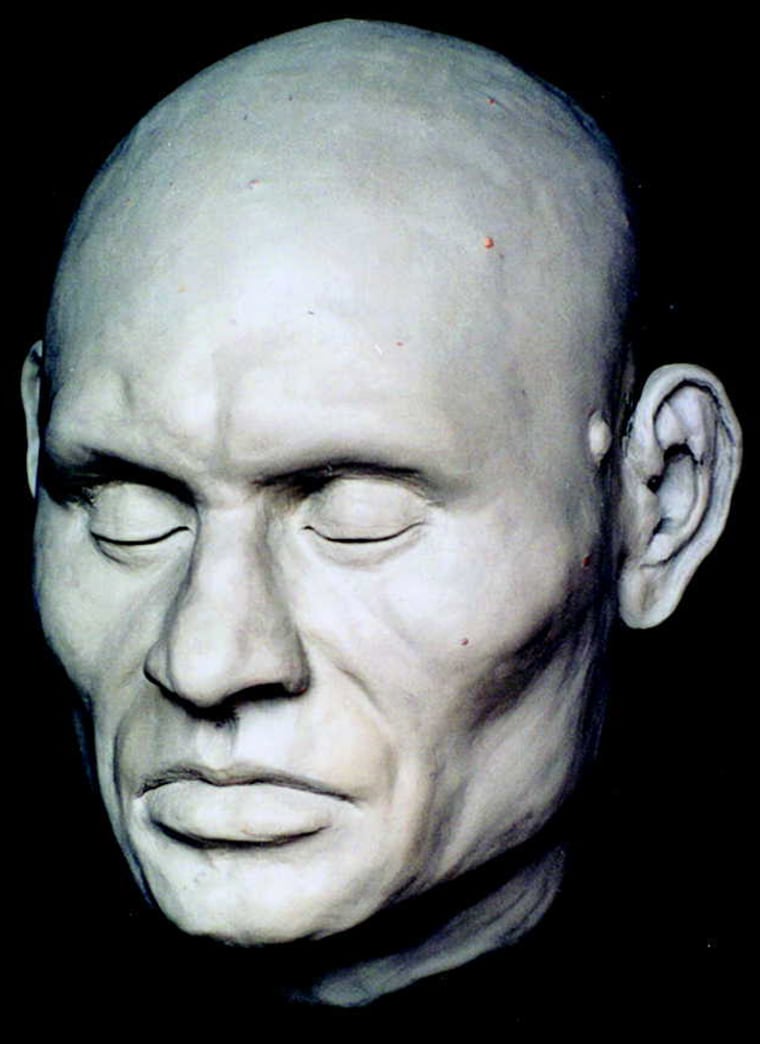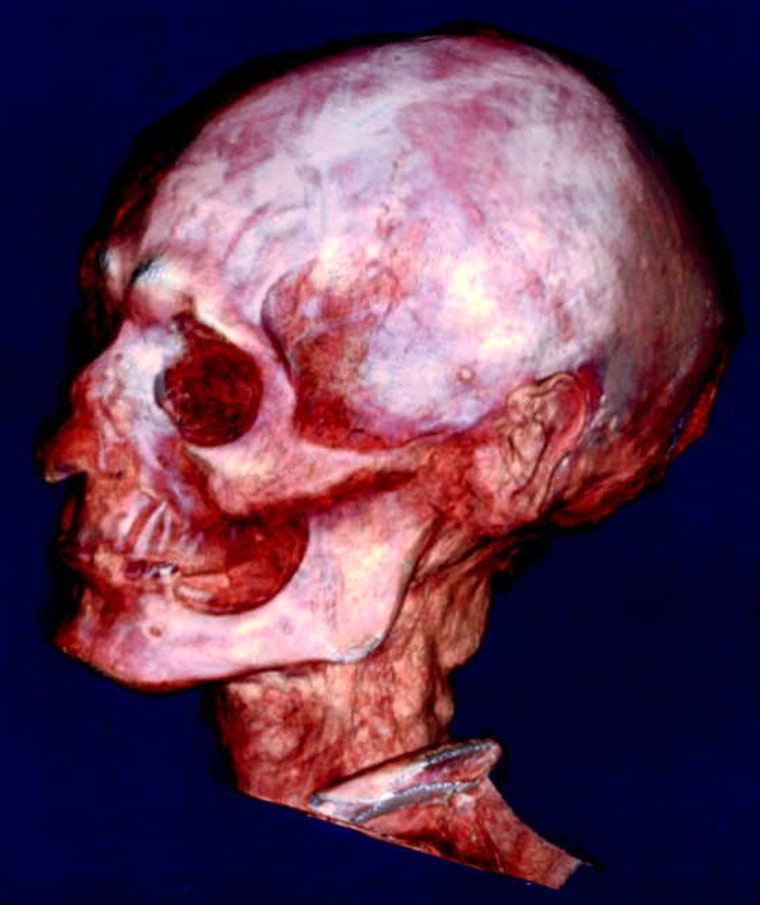Italian scientists have used three-dimensional X-ray imaging to reveal the skull of a nearly 3,000-year-old Egyptian mummy and reconstruct his head, all without disturbing a single wrapping.
The procedure — which blends state-of-the-art CT scanning, rapid prototyping and forensic facial reconstruction — offers a noninvasive way to solve riddles of the ancient past, the scientists said.
"The only other way to have gotten the information we got ... would have been to unwrap, destroy and otherwise alter the conservation of the bandages and the mummy," the head of the research team, Dr. Federico Cesarani of the Struttura Operativa Complessa di Radiodiagnostica in Asti, Italy, said in an announcement.
CT scans as scientific tool
Advanced CT scanning — also known as multidetector computed tomography, or MDCT — builds a series of X-ray cross sections into a complete 3-D picture of a patient. CT scans are increasingly being used for archaeological and paleontological investigations as well as for medical diagnoses. In August, for example, scientists reported that they used CT scanning to map the 147 million-year-old fossilized brain of the first known bird.
Other scientists have turned to CT scans for virtual mummy reconstructions, but "as far as we know, MDCT has never been used before," Cesarani and his colleagues reported. They explained their procedure in the September issue of the American Journal of Roentgenology.
The team started with the wrapped mummy of Harwa, an artisan who is thought to have lived sometime between 945 and 715 B.C. The mummy was found in the early 1900s in Egypt's Valley of the Queens by Italian Egyptologist Ernesto Schiaparelli, and brought to the Egyptian Museum in Turin.
The mummy was placed on a standard medical scanner, and 335 images were made during just 27.4 seconds of scanning time. That imagery was fed into a computer, and the bandages were virtually removed by manipulating the software. The researchers also could discriminate between the soft tissue of Harwa's face and his skull.
Turning software into substance
The next step was to transform the virtual skull into a plastic replica, using a computerized rapid-prototyping system. Then forensic experts added layers of plasticine and modeling material to the skull.

The researchers couldn't determine how fatty Harwa's face was — they just had to go with their best guess on that part of the reconstruction. But they could figure out how muscular it was, based on the muscle insertions visible on the virtual skull bones. The mummy's soft-tissue profile also helped with the reconstruction, particularly around the nose, mouth and ears.
Details of the soft tissues were reproduced on the modeled head, right down to a small lesion visible on the left temple. The researchers said they decided not to add facial hair or makeup to their model, "to limit artistic interpretation and give precedence instead to the scientific data."
Based on the virtual reconstruction, the researchers said Harwa was about 45 years old when he died. "The teeth are in poor condition, and no other evidence of disease can be seen," they said.
In his statement, Cesarani noted that the techniques of facial reconstruction are being applied to fields far beyond Egyptology: "Police use it for identifying bodies, anthropologists to learn more about individuals in ancient societies, and medicine can learn about the diseases that afflicted ancient peoples."
